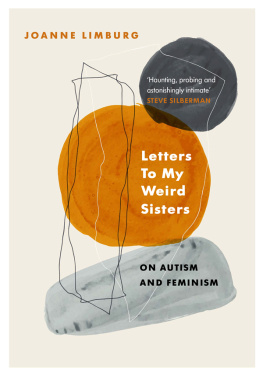Contents
About the Book
Significant Sisters traces the lives of eight women, each of whom pioneered vital changes in the spheres of law, education, the professions, morals or politics: the first woman doctor, the pioneer of birth control, a radical journalist, and suffragists. Each forged her own particular brand of feminism, yet all fought bravely to make real, lasting differences to womens lives, and make us redefine our own notions of feminism today.
About the Author
Margaret Forster is the author of many successful novels, including Ladys Maid, The Memory Box, Diary of an Ordinary Woman, two memoirs, Hidden Lives and Precious Lives, and several acclaimed biographies, including Good Wives.
ALSO BY MARGARET FORSTER
Fiction
Dames Delight
Georgy Girl
The Bogeyman
The Travels of Maudie Tipstaff
The Park
Miss Owen-Owen is At Home
Fenella Phizackerley
Mr Bones Retreat
The Seduction of Mrs Pendlebury
The Battle for Christabel
The Bride of Lowther Fell
Marital Rites
Private Papers
Have the Men Had Enough?
Ladys Maid
Mothers Boys
Shadow Baby
The Memory Box
Mother Can You Hear Me?
Diary of an Ordinary Woman
Non-Fiction
The Rash Adventurer: The Rise and Fall of Charles Edward Stuart
William Makepeace Thackeray: Memoirs of a Victorian Gentleman
Elizabeth Barrett Browning
Daphne du Maurier
Hidden Lives
Rich Deserts & Captains Thin: A Family & Their Times 18311931
Precious Lives
Good Wives: Mary, Fanny, Jennie & Me 18452001
Poetry
Selected Poems of Elizabeth Barrett Browning (Editor)
Significant Sisters
The Grassroots of Active Feminism 18391939
Margaret Forster

for
ALISON HOOPER
who has fought the feminist fight
throughout her life
Feminist progress in context of general changes
Specifically feminist issues are indicated thus; titles in italic. Unless otherwise stated all political acts, laws, unions, etc., are for Great Britain: it is not possible on a chart of this limited scope and size to list all the important counterparts in America because of the way progress developed from State to State. Only major events mentioned in the text are shown.
List of Illustrations
Caroline Norton
Elizabeth Blackwell
Florence Nightingale
Emily Davies
Josephine Butler
Elizabeth Cady Stanton
Margaret Sanger
Emma Goldman
Introduction
FEMINISM IS FULL of riddles. One of the most intriguing is why it has not attracted an enormous rank-and-file following among women themselves, why it is still as necessary as it was in the nineteenth century to have to ask a woman if she is a feminist. The plain truth is that not only do large numbers of women feel apathetic but many more actively hate feminism. This is because right from the invention of the word it has been both misrepresented and misunderstood. Undeniably, this was the fault of men, because men controlled the outlets for the spreading of new ideas, but it was also the fault of the feminists themselves. They were too honest, expressed too openly and fully their fears and worries and, most of all, their resentments. The result was that feminism became frightening in its implications.
But in fact there is nothing to be frightened of. Feminism, both for men and women, is the most attractive and peaceful of doctrines. It is quite wrong to see it as an aggressive, destructive movement which aims at making neuters of us all. It is not really one movement at all. Its history, which has been until recently greatly neglected and is still far too little known, shows clearly enough that there has been no one movement progressing steadily throughout the decades. Sometimes feminists did indeed group together to achieve a particular goal but these groupings were always episodic. When that goal was achieved, the movement disappeared. Feminism, because of this, is not like a political belief. You cannot join the feminist party, for example, as you can join the Labour party (although you can join all kinds of womens organizations) and you cannot say you are a feminist in the same way that you can say you are a Socialist. Nor is feminism a religion, like Christianity. There is no church, no visible structure. You cannot say you are a feminist in the same way you can say you are a Catholic or a Methodist. The only way to clear away the utter confusion surrounding the meaning of feminism is to start regarding it first of all as a kind of philosophy, as a way of looking at and thinking of life for all women.
It will immediately be obvious that this produces a problem: life for one woman is not the same as life for another. Even further, life in one place for one woman is not the same as that life in another place. An English feminist was never the same (and still is not) as a German feminist. All feminists think they want self-fulfilment for women but since that self changes dramatically from country to country, from class to class, and from age to age, this ambition is almost meaningless. What is self-fulfilment? Are there certain fundamental principles upon which all feminists can agree regardless of social, cultural and political differences? The history of feminism shows that there are but that it took a long time for them to be recognized. The trouble was that feminists did not know where to begin. They had the greatest difficulty in deciding why womans lot was so much worse than mans even before they moved on to deciding how it could be improved. Long before active feminism arose, the theorists debated the situation and came to different conclusions. Some thought education was the key: women were not educated for anything but subordination. Change their education and their expectations in life would change. Others thought it was a matter of biology, that nature was the real enemy, and these were the most depressed theorists of all, for what could be done about nature? But while all this intellectual debate was going on, while the tracts and pamphlets on the condition of woman were appearing throughout the eighteenth century, the first stirrings of
















